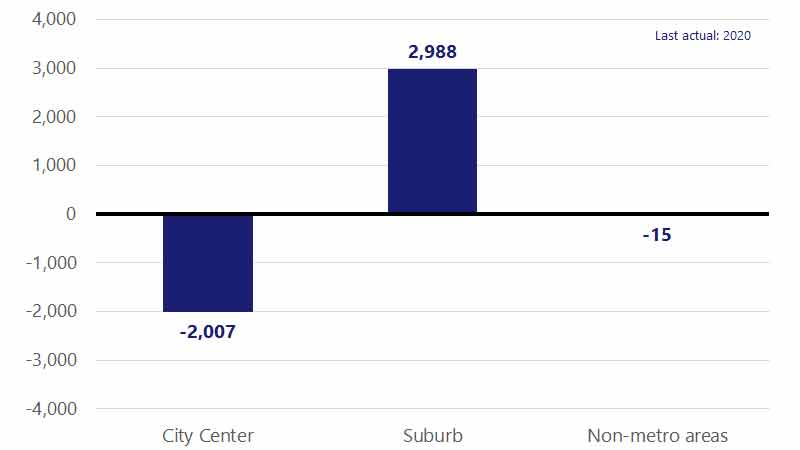July 14, 2021 – When the COVID-19 pandemic hit last year, forcing many businesses to embrace work-from-home arrangements with their employees, did it also trigger a massive move out of urban areas as was widely reported? Change-of-address data suggested an exodus from New York, Chicago and San Francisco, so we decided to leverage VisaNet data to see how widespread the outmigration from urban centers had become over the last year and which areas benefited. Our analysis suggests there is little evidence of a widespread deurbanization trend, but rather a great reshuffling¹ of the population. Specifically, among those who relocated, the majority moved from a high cost-of-living area to a lower cost-of-living area. Those who were able to work remotely, and did not have to consider commute time, had the added incentive of relocating to the suburbs and other areas that were less expensive.
This geographic resorting will have implications for the housing and commercial real estate markets in higher-cost cities. While the evidence is still early, it suggests that many of these higher-cost metro areas could suffer for a while should some remote work arrangements become permanent. The lower-cost areas, on the other hand, could present new opportunities for merchants and issuers as consumers who have migrated there increase their discretionary spending potential. These newly-relocated individuals could help boost growth for both the communities and the businesses that serve them.
